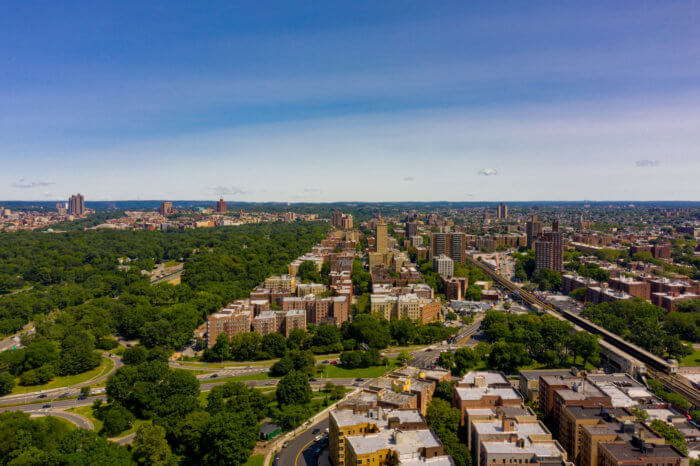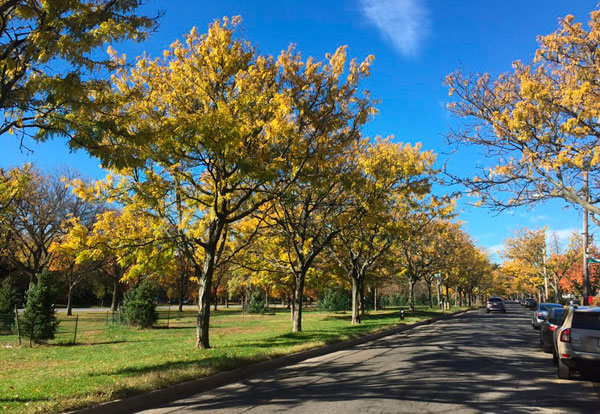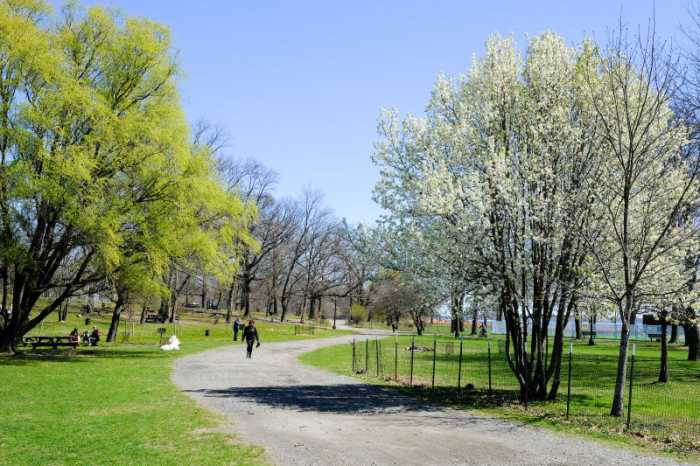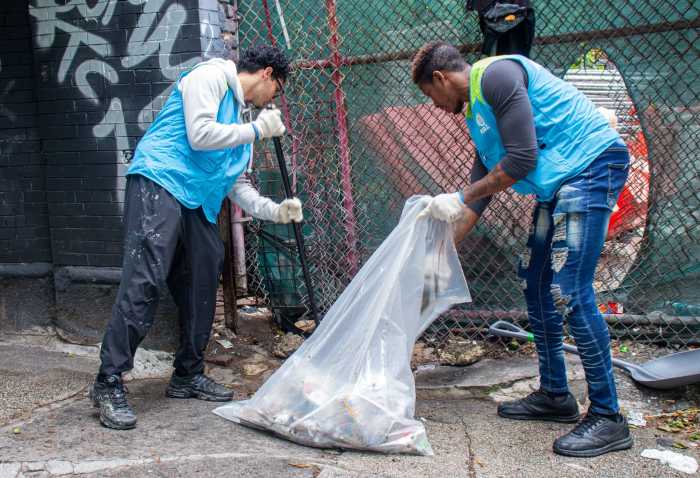The Bronx is New York City’s greenest borough — 24% of the borough is considered parkland — yet environmentalists say that much of its green space is consolidated in large parks on the periphery of the borough, which are difficult to access for many residents.
Fixing the borough’s tree equity, which indicates if a neighborhood has enough trees in the right places so that all residents enjoy the health, economic and other benefits from them, is the focus of a new partnership between Ecosia — a green search engine which uses 100% of its profits to reforest the planet — and a local nonprofit environmental group Bronx is Blooming (BiB).
Addressing the Bronx is German-based Ecosia’s third U.S. project having previously supported tree planting in low-canopy and heat-vulnerable neighborhoods that were historically redlined in Los Angeles and Chicago. In 2022, more than 13,000 trees have been planted in canopy-deficient NYC neighborhoods, but the Bronx with 125,000 mapped trees, according to the city’s tree map, is grappling with inequitable tree access in the area’s more-environmentally fraught sections.
Trees have become a commodity as they were often planted along race and class lines, often in wealthier, usually white neighborhoods, according to American Forests. Underserved communities, primarily majority Black and brown families in high-density areas of the urban landscape, have 33% less tree canopy on average than majority-white communities.
Ruby Au, head of Escosia’s North America projects, told the Bronx Times that the Bronx was chosen when she researched and visited the borough and found a swath of tree-barren streets in South Bronx areas where environmental health factors are severely affect families.

“When we were looking for areas that were low-canopy and underinvested, the Bronx kept coming up over and over again,” said Au. “Less people want to fund the actual community engagement aspect to plant a tree, and even less want to fund the operational costs (for a tree-planting project). We recognize that green transition is not possible without empowering and uplifting communities so they can meaningfully participate.”
While some areas in the Bronx like Tremont and Riverdale have a high concentration of trees and access to them, communities in the South Bronx’s Asthma Alley, such as Mott Haven, have the lowest tree equity scores in the city. On Saturday, the program officially launches in Soundview Park, where Assemblymember Kenny Burgos is also expected to discuss a pipeline expansion planned for the park.
Trees around the country absorb 17.4 million tons (15.7 metric tons) of air pollutants, preventing nearly 700,00 cases of asthma annually. In socioeconomically disadvantaged neighborhoods, families tend to see more asthma in their children due to repeated exposure to environmental triggers, like poor air quality concentration and the prevalence of hazardous power plants.

When Au and Henry Jorden — who directs the PLACE Program at BiB — met with some Bronx students who will be instrumental in the urban tree-planting program, and asked them their thoughts of the borough, many defaulted to descriptors like “dirty.” Program leaders told the Bronx Times that the Bronx’s industrial areas are potential starting points for new tree infrastructure.
“When we were sitting with the students (on Wednesday) and we asked what came to mind when they thought about the Bronx, one of the first words that each of the kids said was ‘dirty,’” said Au. “So much of that is shaped by the social environment you grow up in … and the Bronx is often a food desert, but what if there were more trees, more fresh food access, I think that can change the perceptions they may have of where they live.”
In addition to repopulating tree-barren Bronx sections with more canopy, BiB is using the program as an opportunity for Bronx students and youth to become stewards of their local environment, and possibly find a career in the green sector and beyond.
Youth unemployment in the Bronx is 21%, much higher than the citywide average of 12.3%, which became the impetus for BiB’s youth development program.
“A lot of students want to work in health care and to be able to provide them a lens of the environmental issues that are affecting their communities, allows them to be incredible advocates and stewards for their community,” said Jorden.
As a part of the partnership, Ecosia will support college mentors who will train high school students to lead volunteer groups in environmental restoration projects.
Ecosia is also funding the positions of four college-aged PLACE mentors who will equip these students with hands-on environmental stewardship training, access to vocational opportunities in the environmental sector, and tools to engage their communities in local environmental challenges and solutions.
Reach Robbie Sequeira at rsequeira@schnepsmedia.com or (718) 260-4599. For more coverage, follow us on Twitter, Facebook and Instagram @bronxtimes.






















